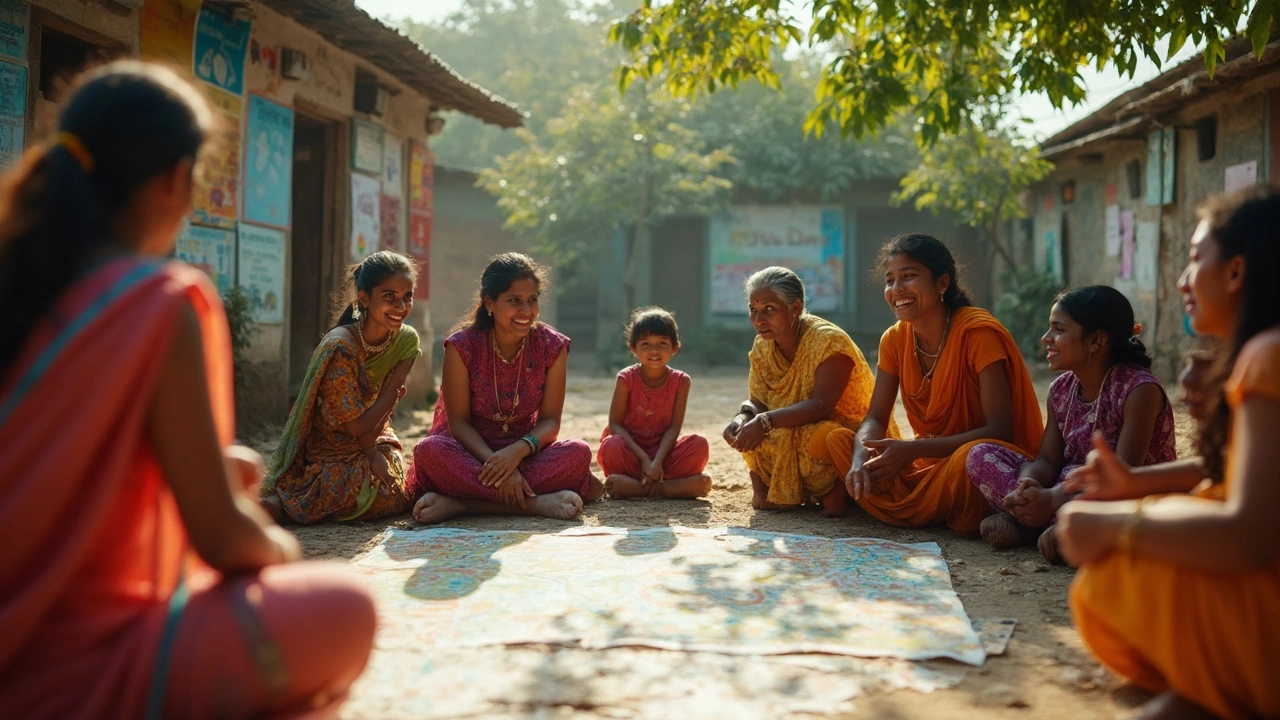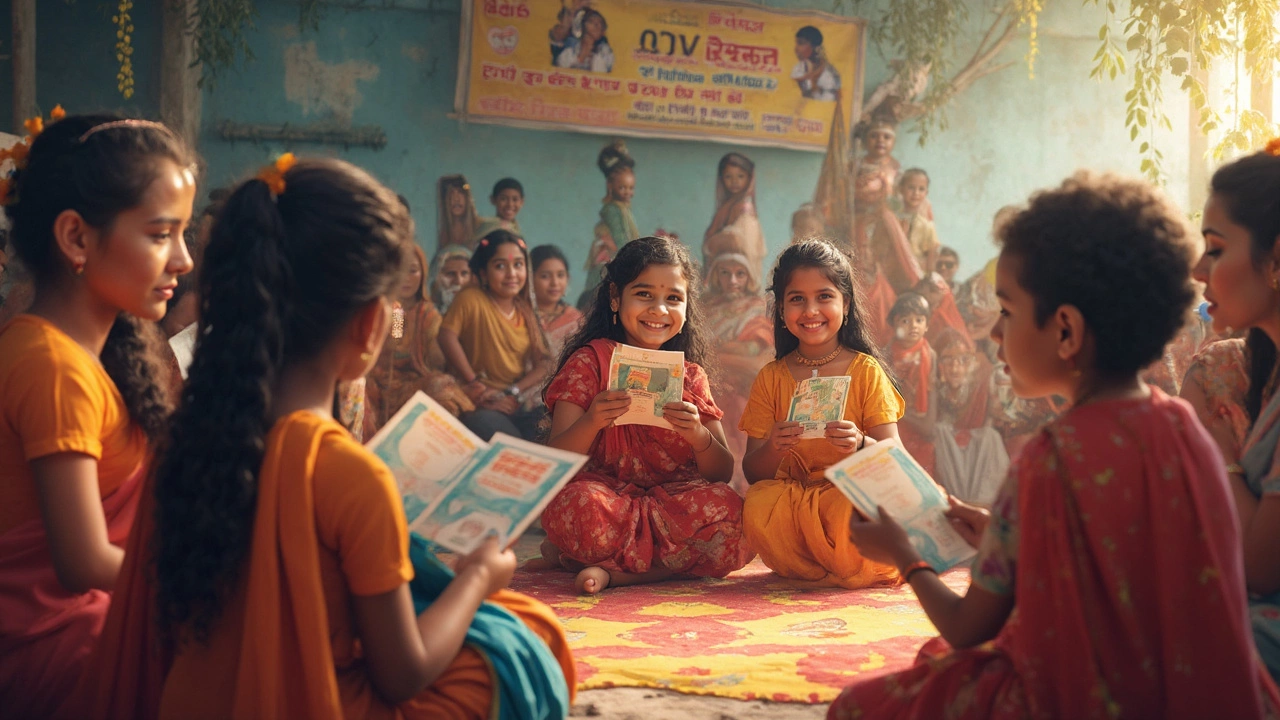Community Based Health Initiatives: Making Healthcare Work Locally
 May, 12 2025
May, 12 2025
Ever noticed how some of the best health fixes don’t come from big hospitals, but from people right in the neighborhood? That’s the magic of community based health initiatives. These aren’t your typical government campaigns: they’re local projects designed, led, and run by the people who know their communities inside out. Instead of telling folks what to do from the top down, they ask locals what’s needed and then help them drive real change—whether it’s about cleaner parks, tackling diabetes, or getting teens to swap sodas for water.
Here’s where it gets interesting. Studies show these grassroots efforts do more than raise awareness—they actually lead to healthier lives. In some towns in India, for example, simple education and clean water programs slashed disease rates way faster than big, city rules alone could manage. The trick isn’t massive funding, but the trust people have in their own neighbors and the hands-on solutions that make sense for them. When everyone feels invested, results come down to earth—and stick around longer than posters or one-off checkups ever could.
- Why Community Based Health Initiatives Matter
- How Do They Work? Nuts and Bolts
- Real-World Examples and What We Can Learn
- Tips to Get Involved or Start Your Own
Why Community Based Health Initiatives Matter
Community based health initiatives hit at the root of what makes people tick: trust, connection, and firsthand knowledge of local issues. If you’ve ever wondered why some health campaigns don’t take off, it’s usually because they’re made by outsiders who don’t fully get what the neighborhood needs. When local people call the shots, the advice, clinics, and activities actually line up with real life. According to the World Health Organization, programs run by communities themselves usually reach more folks and get better health results, especially in hard-to-reach or low-income areas.
Look at how HIV prevention changed gears once peer leaders started educating others in their own circles. In places like South Africa, peer-led efforts cut down new cases because people trusted and opened up to someone who spoke their language and lived their challenges. This isn’t just about medical care—sometimes it’s about fixing sidewalks for safer walking or organizing farmers’ groups to tackle malnutrition with local crops.
It’s not a one-size-fits-all approach. Each neighborhood shapes its own plans, so solutions are practical and actually used. That’s why these programs nail problems like chronic diseases or teen pregnancy, which stubbornly stick around when you rely only on clinics. They keep costs down, too—by using existing resources, volunteers, and local spaces, they deliver more bang for the buck than most formal health programs.
The best part? When everyone’s involved, people feel more responsible for their own health and their neighbors’. It sparks a ripple effect: one family’s new habits often rub off on the whole street. That’s the real secret sauce behind community health work—getting everyone rowing in the same direction, driven by what actually matters to them.
How Do They Work? Nuts and Bolts
The process behind community based health initiatives is refreshingly practical. First, it starts with folks who actually live in the area identifying what really needs fixing. They might notice rising blood sugar in families, unsafe drinking water, or more junk food in schools. These aren’t guesses—these are issues they bump into every day.
Next, the local group teams up. Usually, this means health workers, teachers, volunteers, and sometimes even local businesses. The main thing is that everyone involved knows the community and has real buy-in. One big plus? Solutions can be adapted on the fly. If one method isn't working, people can tweak things—fast—without waiting for some distant office to approve.
Now, here’s how the whole thing clicks together:
- Community health needs assessment – A real look at what's affecting people, often organized through surveys, interviews, or even chats at the market.
- Action plan – Mapping out what to tackle first (like, switching soda machines for water fountains or building basic toilets).
- Training – Locals get trained up, sometimes by nearby clinics or NGOs, to spread knowledge or run screenings.
- Rollout – Volunteers or local leaders run workshops, share info, or handle actual services, like health checks or free medical camps.
- Feedback loop – Success is tracked through local data. Adjustments are made, so things actually improve instead of just looking good on paper.
To put it in perspective, Dr. Paul Farmer, who co-founded Partners In Health, famously said:
“The idea that some lives matter less is the root of all that is wrong with the world.”
This mindset keeps these initiatives honest—real problems, real fixes, with the community steering the wheel. If you’re thinking this sounds simple, that’s kind of the point. The closer solutions get to the ground, the better they fit people’s day-to-day lives, and the more likely they are to last.

Real-World Examples and What We Can Learn
Community based health initiatives pop up everywhere, from alleyways in Mumbai to rural towns in America. The cool thing is, they don’t all look the same, but they share one big idea: real people drive real solutions. Let’s talk specifics.
One standout is the “Sekhukhune District Health Project” in South Africa. Local women formed groups to teach mothers about breastfeeding and safe baby care. In just two years, the number of infants getting proper nutrition almost doubled. The secret sauce? Moms trusted other moms with advice way more than strangers in clinics.
In the U.S., the "Boston REACH Coalition" took on high blood pressure in Black communities. Instead of just mailing leaflets, they trained barbers to check blood pressure and chat about healthy habits. Some barbers even handed out info cards with every haircut. Results? People who visited these barbershops were nearly twice as likely to get follow-up care compared to those who didn’t. Local connections just work better.
India’s “ASHA” workers—local women trained as health helpers—are another game changer. By visiting families door to door, they boost vaccination rates, help with basic first aid, and spread word about key health steps. India’s under-five mortality rate dropped from 74 per 1,000 in 2005 to 42 in 2022, and ASHAs played a big part in that win.
| Country | Initiative | Key Outcome |
|---|---|---|
| South Africa | Sekhukhune District Health Project | Proper infant nutrition nearly doubled |
| USA | Boston REACH Coalition | Twice the follow-up care for high blood pressure |
| India | ASHA Workers | Under-five mortality rate nearly halved |
Seeing community health efforts in action clears up what really makes them work. Locals know their own challenges, speak the language, and spot problems outsiders might miss. Want to boost community health where you live? Look for the folks already making an impact; let them steer the ship. Small, everyday solutions—like turning a barbershop into a checkup spot or having neighbors talk health—turn into big change over time.
Tips to Get Involved or Start Your Own
Community health works best when people don’t just sit back—they jump in. Whatever your skills or schedule, there’s room for you. Want to lend a hand or kickstart a project of your own? Here’s how to put things in gear.
- Find Existing Groups: Start simple. Search for community-based health programs running in your area by checking with local clinics, public health offices, or even neighborhood WhatsApp groups. These teams always need extra hands for events, outreach or just spreading the word.
- Listen to Local Needs: Don’t assume you know what the community needs most. Ask around—neighbors, elders, school staff. Sometimes the first thing people mention is what matters most, like safer playgrounds or better nutrition at school.
- Partner Up: Link up with schools, local businesses, or even sports clubs. Collaboration means more heads, more resources, and less burnout. This is how programs grow roots and last.
- Start Small: Running a community health drive doesn’t mean hosting a giant health fair on day one. Kick off with a street clean-up, a nutrition demo, or a blood pressure check at the pharmacy. Tiny wins build trust fast.
- Track Impact: No one likes busywork for the sake of it. Use simple checklists, feedback forms, or mobile apps to see what’s working. Share wins with your team to keep everyone motivated.
Here’s a quick snapshot of what gets results in real life:
| Initiative | Average Volunteer Hours Needed/Month | Change Seen in 1 Year |
|---|---|---|
| Cooking Classes for Kids | 12 | 20% increase in healthy lunches packed at local school (per school survey) |
| Neighborhood Walking Groups | 8 | 22% drop in participants' reported stress (local health center data) |
| Weekly Health Talks in Local Language | 10 | 17% rise in routine checkups (clinic records) |
To stay inspired, look up success stories online. For instance, the “Mohalla Clinics” in Delhi started out small and now serve thousands, showing that grassroots can go big if people stay active and practical.